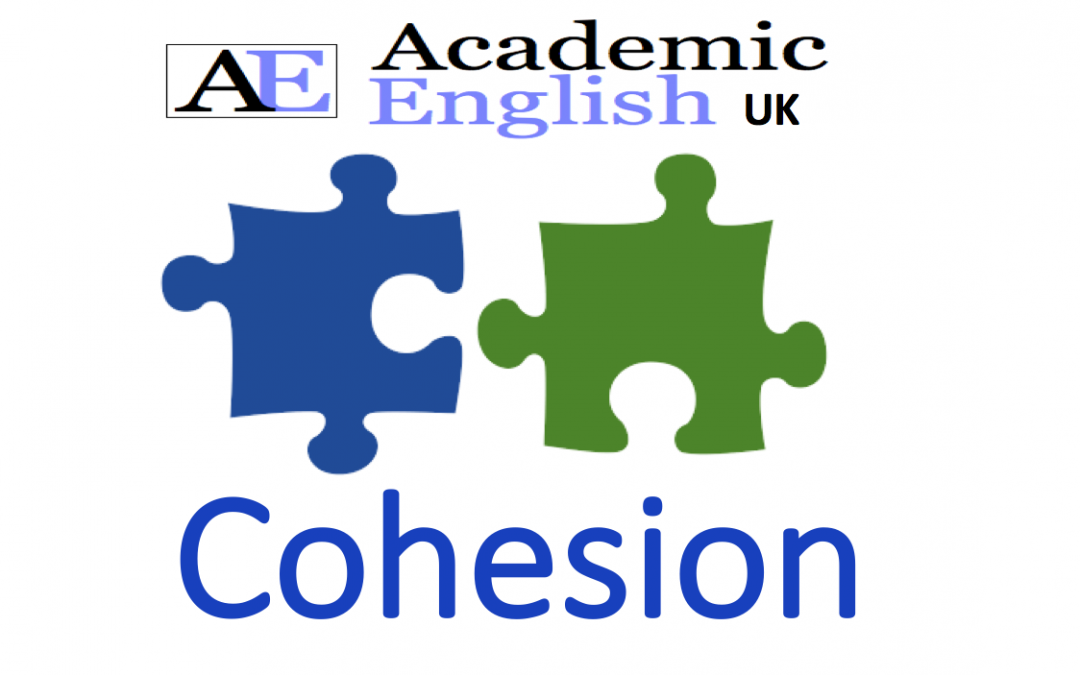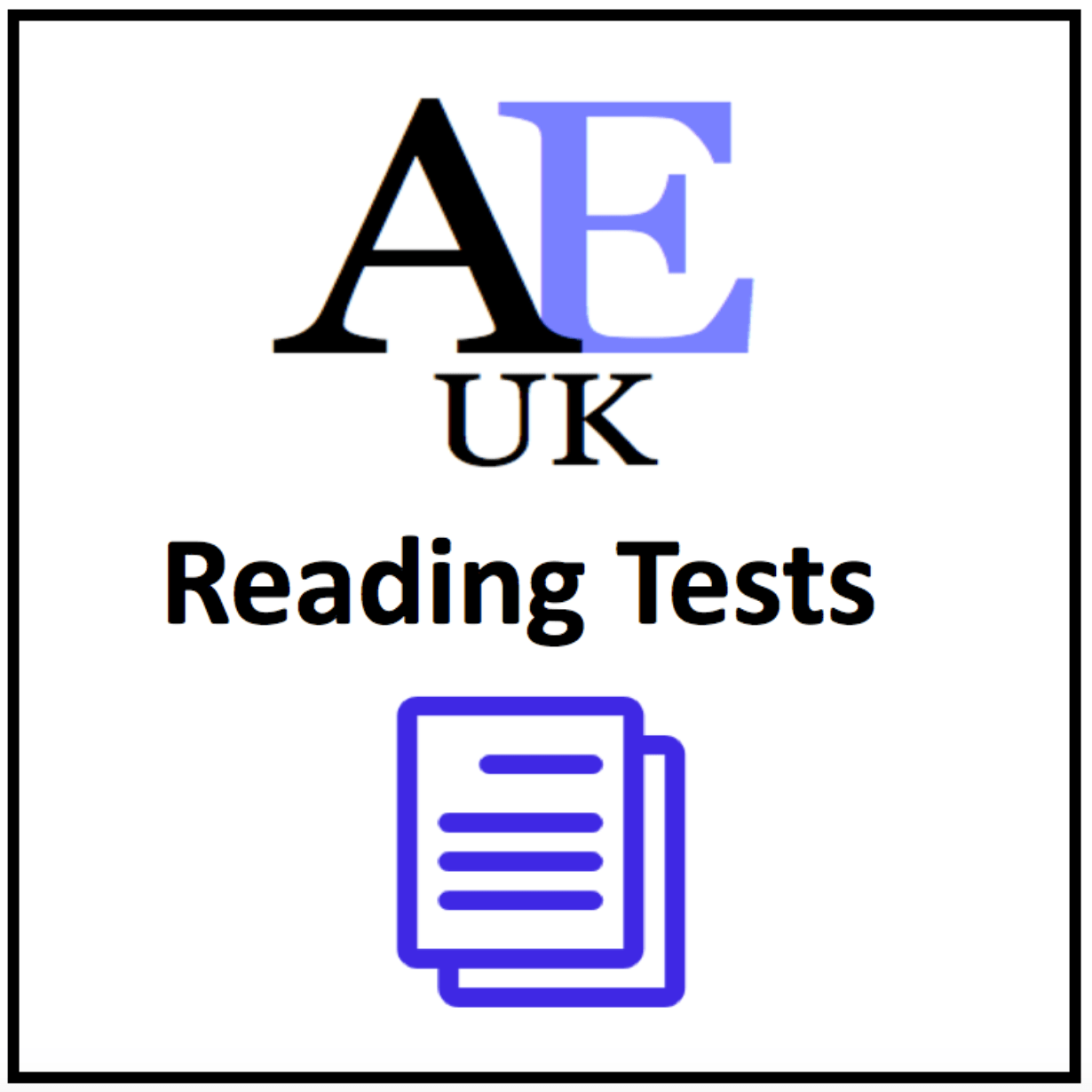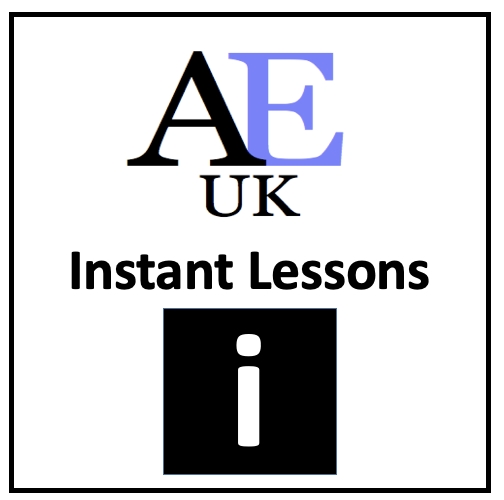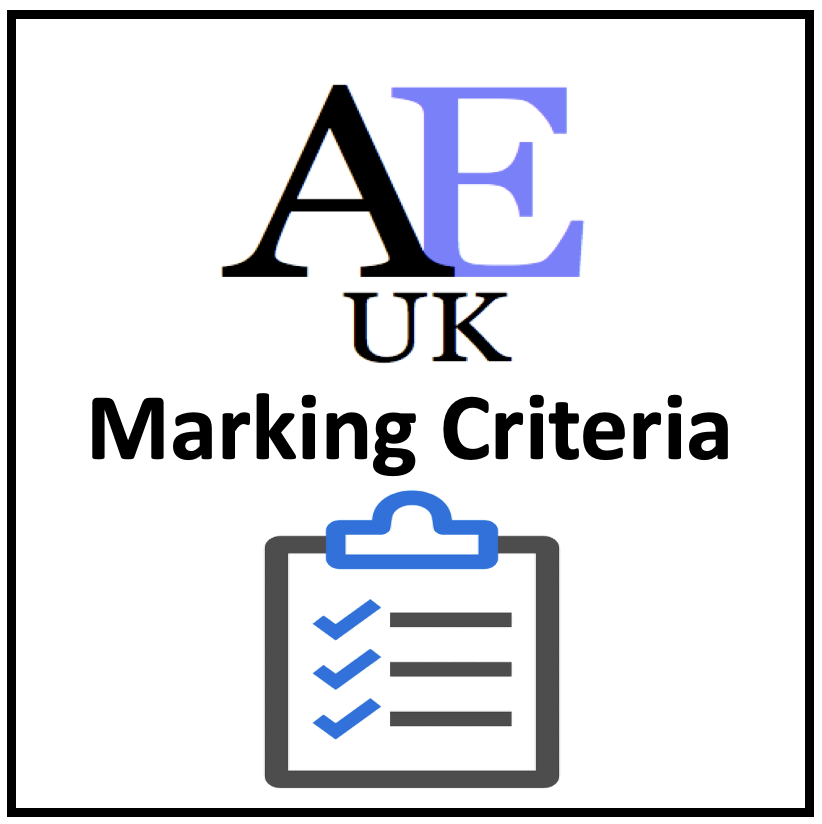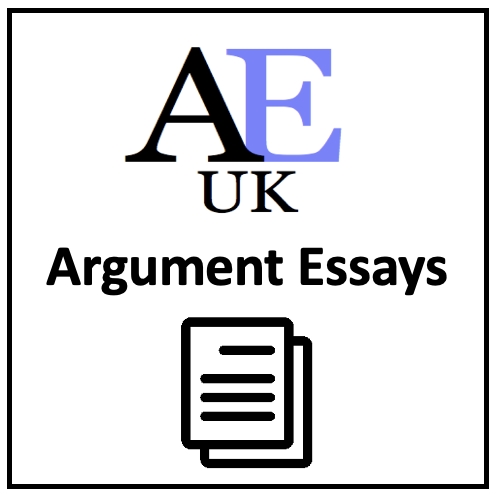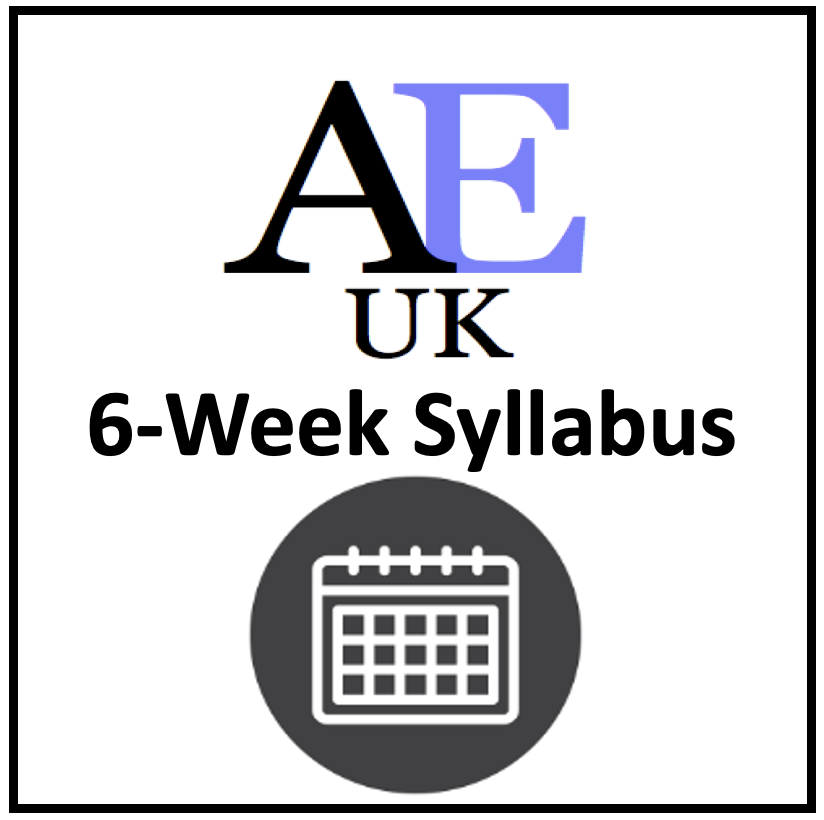Cohesion
What is cohesion?
Cohesion refers to the way texts use grammar and vocabulary to ‘stick’ or ‘glue’ ideas together. This is done through articles (a/an/the), pronouns(it/this/these/that/those/etc..), word families (analyse/ analysis) / summary nouns (approach/trend/issue) and synonyms (effect/consequence). In addition to these above key areas, relative clauses, ellipsis and connectors are also important.
Pronouns
Pronouns: It / this / these / that / those / they
Example: Bristol is situated in the South west of the U.K. It has a population of 530,000 people.
Word forms
Using other forms of the key verb/noun:
Example:Jones (2016) analysed the data and found that …. This analysis provided evidence that…
Summary Nouns
Using a noun [this/these + summary noun] to explain the key idea of the previous sentence.
Example: Many psychologists have been investigating the key reasons for divorce for many years. Their research / evidence seems to suggest that a lack of communication is one of the key issues.
Key examples of Summary Nouns:
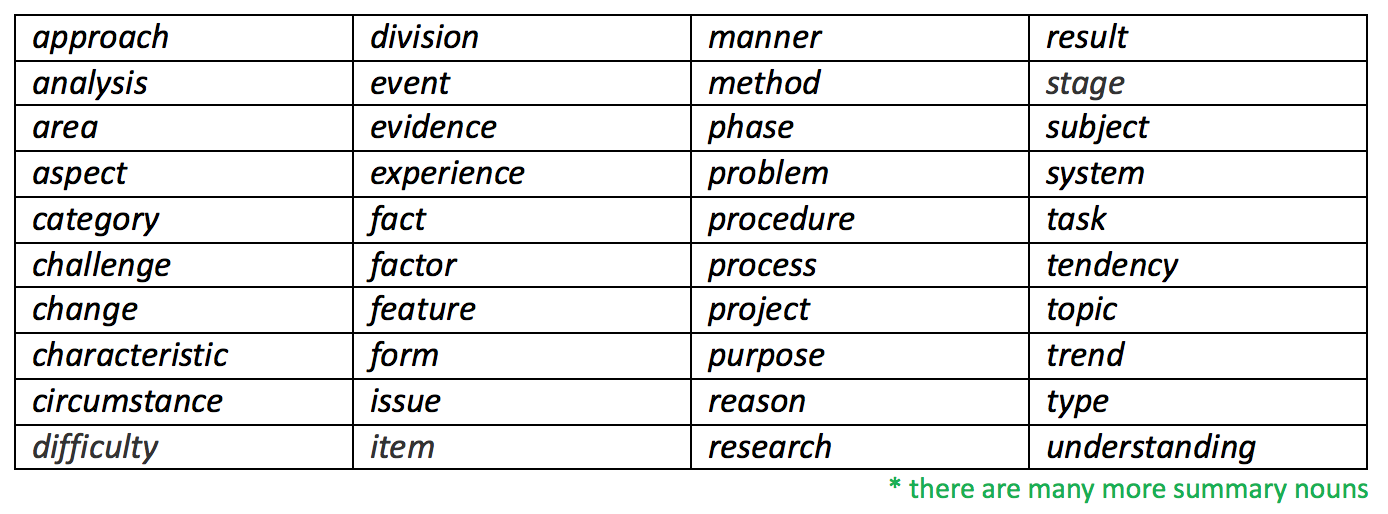
Synonyms
Using a synonym to avoid word repetition of the previous sentence.
Example: Economists believe that the next financial crisis will be from Student Loan debt. This understanding / assumption / thought / knowledge is also shared with financial experts.
Relative clauses
Joining sentences together using relative clauses (which / that / where / who ) aids cohesion
According to Official Government figures (2016), 34 million people voted equating to a 72% turnout. This was the highest ever number of people in the history of voting.
Relative Clause Example: According to Official Government figures (2016), 34 million people voted equating to a 72% turnout which was the highest ever number of people in the history of voting.
Ellipsis
Ellipsis indicates an intentional omission of a word, sentence, or whole section from a text without altering its original meaning. Relative Clause Example: There have been a number of important experiments on how video games encourage violence in adolescents. Two of the most interesting (experiments) are based around Smith’s (2018) work.
 Cohesion & Coherence Worksheet – AEUK
Cohesion & Coherence Worksheet – AEUK
This worksheet helps to consolidate what ‘cohesion’ is with a focus on pronouns, word forms and summary nouns. It also includes a coherence sheet on key connections and two practice activities. Example Level: ***** [B2/C1] / TEACHER MEMBERSHIP / INSTITUTIONAL MEMBERSHIP
*
Coherence
Coherence is concerned with how a writer guides the reader through the argument using logical connectors. It can be achieved by using signposting phrases. A signpost is a phrase that a writer or speaker uses to indicate different stages or parts of a written or spoken text
Example: In contrast to the conclusion drawn by Smith (2004), Nguyen (2006) showed that the connection between the factors was not causal in most circumstances.
Example: The main arguments for Brexit were to regain sovereignty, to cut immigration, and to remove restrictions of the single market to access global markets.
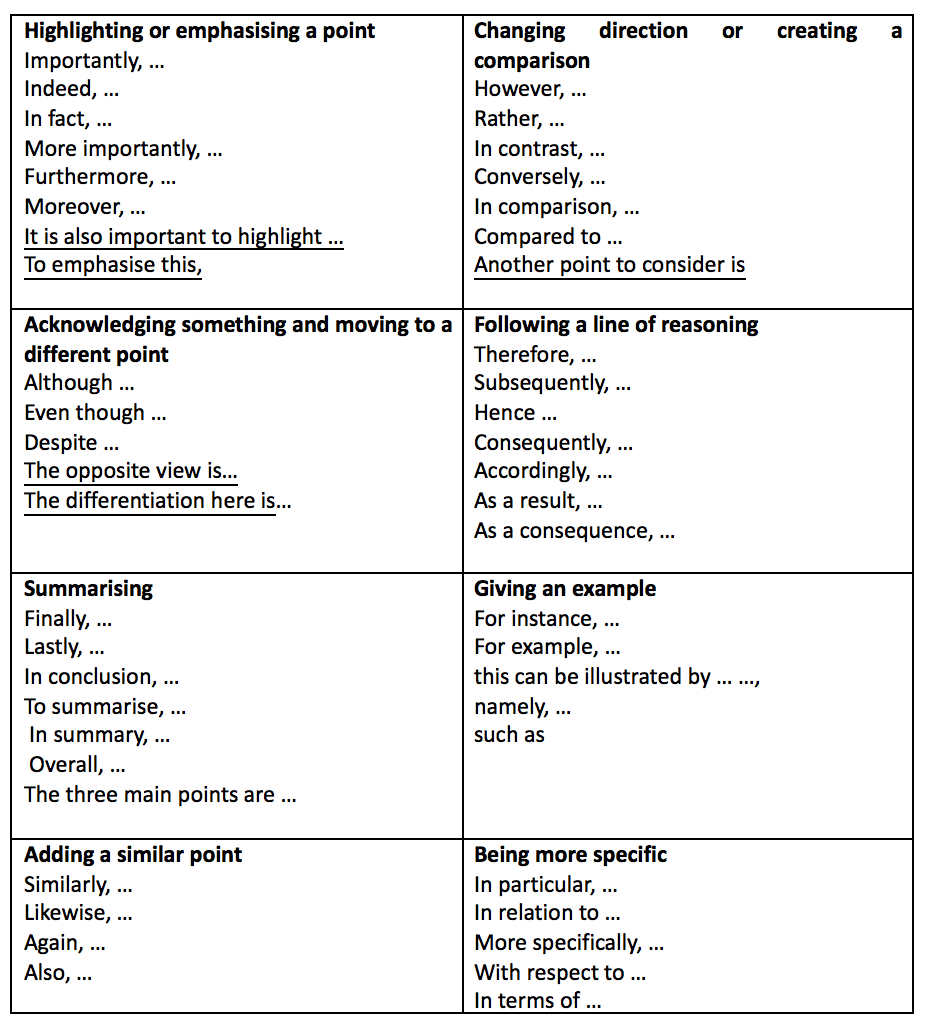
Coherence Information Sheet: Free Download
This information sheet (above) provides students with a range of logical connectors. This can be used with the linking words cut up and matching activity (here / or see below). TEACHER MEMBERSHIP / INSTITUTIONAL MEMBERSHIP
Linking Words Lesson: Free Download
This lesson provides valuable practice in improving formal linking words. Students start by discussing formal linking words, followed by a kinaesthetic matching activity and finishing with sentence worksheet. Level: ***** [B1/B2/C1] / webpage link / TEACHER MEMBERSHIP / INSTITUTIONAL MEMBERSHIP
Nominalisation (verbs / adjectives to nouns)
An introduction to nominalisation. This worksheet shows the basics of nominalising, practises changing verbs and adjectives to nouns, and includes four exercises from guided practice through to freer practice. Very good writing practice activity with a fair amount of challenge for all levels. Level ***** [B1/B2/C1] Example TEACHER MEMBERSHIP / INSTITUTIONAL MEMBERSHIP
*
 Noun Phrases Worksheet
Noun Phrases Worksheet
This lesson highlights what noun phrases are and provides valuable practice. It focuses on the key concepts of quantifiers, adjectives and nouns, noun + noun, noun + preposition and noun phrase combinations (see example). Level ***** [B2/C1] TEACHER MEMBERSHIP / INSTITUTIONAL MEMBERSHIP
*
 Noun Phrases Worksheet 2 (detailed)
Noun Phrases Worksheet 2 (detailed)
This lesson is designed to help students write more concisely by using noun phrases. It takes students through a whole range of tasks including noticing the language in context, eight guided practice tasks and five freer practice activities. There’s a language review sheet included too. (see example). Level ***** [B2/C1] TEACHER MEMBERSHIP / INSTITUTIONAL MEMBERSHIP
*
X
 Parallelism Worksheet: 8 exercises
Parallelism Worksheet: 8 exercises
This worksheet provides an explanation of the key concepts of ‘parallelism’ and provides an error correction exercise to practise the key concepts. An awareness of this writing element really helps establish unity and readability in sentence structure. See Example worksheet. Level: ***** [B1/B2/C1] TEACHER MEMBERSHIP / INSTITUTIONAL MEMBERSHIP
*
Writing Resources
More digital resources and lessons
Readings
online resources
Tests
online resources
Grammar
online resources
Medical English
online resources
New for 2024
online resources
DropBox Files
Members only
Writing
online resources
Summary
online resources
Vocabulary
online resources
Instant Lessons
online resources
Marking Criteria
online resources
OneDrive Files
Members only
Listening
online resources
Argument
online resources
Critical Thinking
online resources
Topic-lessons
online resources
Feedback Forms
online resources
6-Week Course
Members only
Speaking
online resources
SPSE Essays
online resources
Free Resources
online resources
Charts and graphs
online resources
AEUK The Blog
online resources
12-Week Course
Members only

